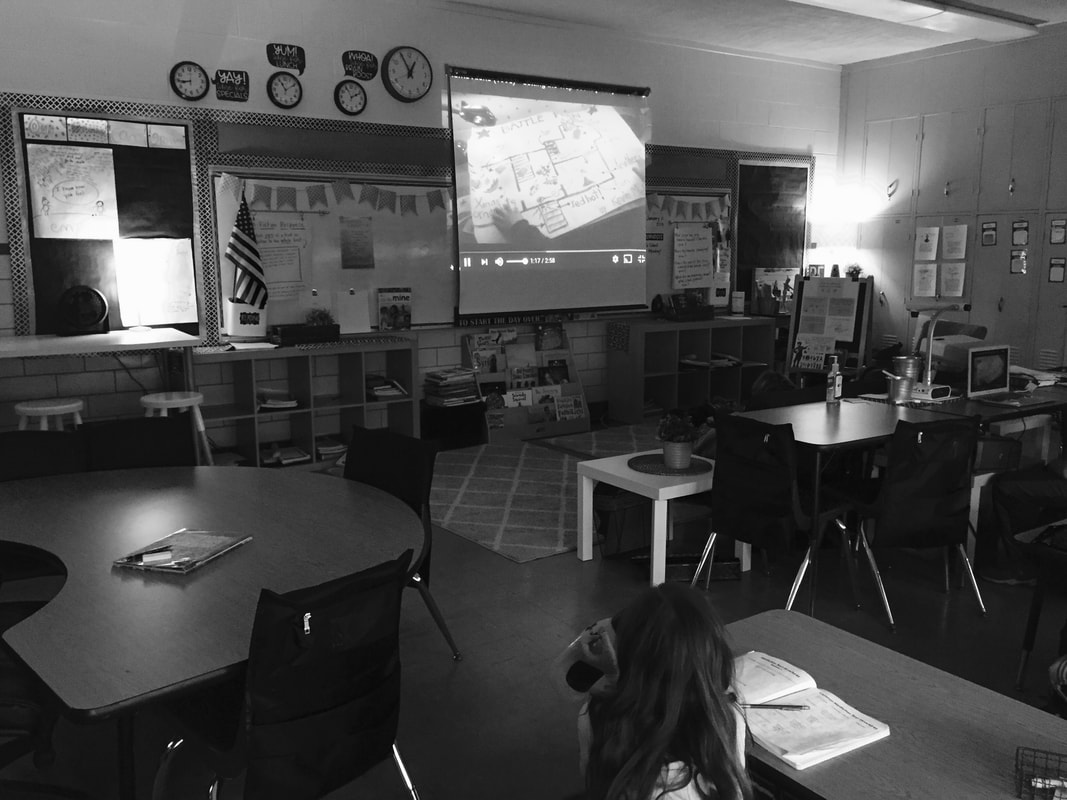|
In our fourth grade classroom we use TCRWP's Reading Units of Study. The units are broken down by grade level, each grade level has two literature and two informational units. The kits also come with If, Then units that help you add to your curriculum. I say all of this first to let you know what I currently use as my curriculum. We just began our first informational reading unit and session three has us introducing text structures to students. Last year, my students struggled with this. I knew this session was coming and I was checking out the TCRWP Reading Units of Study Facebook Group and this great comment sparked the idea. A teacher shared how she helped show her students text structure by using a scene from The Sandlot. Seed planted. I started thinking about some of my own favorite scenes from The Sandlot. Then, I created a post on my personal page asking friends to help throw out some movie ideas after I knew I wanted to use The Sandlot, Jumanji and Home Alone. This work was perfect for today because yesterday we went over our pre-assessment (see The Units of Study) and one of the questions is always about how parts of a text fit in relation to the whole text, another asks students about the author's craft and technique. All of the student samples, student checklists, etc. have students using the language of text structure. Here's how it went when I took it to my classes today. "Alright readers. Do you remember how questions number two and three were super hard on that pre-assessment? Some of you were looking at me like 'Mrs. Riedmiller, what is technique?!'... Readers nodded in agreement. "As nonfiction readers, when we move from "waiting for the dentist" nonfiction reading to "reading to learn" nonfiction reading, we have to get the whole picture before we dig in. Wednesday we talked about previewing texts, and I told you that I needed to see the whole pizza before I decided which piece I was going to take.... well when we know how a text is organized we can take our previewing and ultimately understanding of the text to the next level, we read with the big picture in mind." "Today I want to teach you that nonfiction readers think about how texts are organized. This helps us move from "waiting for the dentist" nonfiction reading to "reading to learn" nonfiction reading. Here are some of the ways that nonfiction texts can be organized: chronological order, cause & effect, compare & contrast or problem/solution." I gave the students some keywords to look for in each category. Once I gave them the short handout it was time to watch the clips. "I am going to show you four short videos and I want you to decide if you can figure out which videos pair up with the four text structures." I showed the kids four videos, asking them to jot down which structure they thought each matched up with. Then I played each video a second time AFTER telling them the correct structure. "Now I will tell you the structure that matched each video and this time as you watch the clip, I want you to see if any of the key words pop out. I want you to really pay attention and think about how that structure fits with each clip." This is just an example of the language I use with my kids. Here are possible clips to use: Chronological Order: Ham Shows Smalls How to Make S'mores (The Sandlot) I Suppose You're Gonna Fly (Space Jam) Making Friends With a Dragon (How to Train Your Dragon) Gotta Go (Spider-Man Miles Morales 2018) Cause & Effect: Roll the Dice (Jumanji, 2005) Smart House (Annie, 2014) Thanks, Britt! Dangerous Book (The Neverending Story) Tra La La! (Captain Underpants) Bull in a China Shop (Ferdinand) First Fight at the New School (Little Monsters) Compare & Contrast: Wingardium Leviosa (Harry Potter) They Named Her Matilda (Matilda) Grandma VS Mariachi (Coco) Problem/Solution: Kevin Sets the Traps (Home Alone) Quick! Call 911 (The Little Rascals) Indestructible Gnomes (Goosebumps) I am still on the search for great clips to share with my learners and it’s important to make this note: students should be able to prove how each clip fits with the structure. I am always ready to hear proof and examples from my kids. Choosing between cause & effect and problem/solution is tough work. If a learner can back up their reasoning or thinking I am more than willing to hear them out. Be open, be willing to see if some of these clips fit MORE than one structure because many do. I hope this lesson turns out as successful for you as it has for us. Happy nonfiction reading!
38 Comments
|

 RSS Feed
RSS Feed
